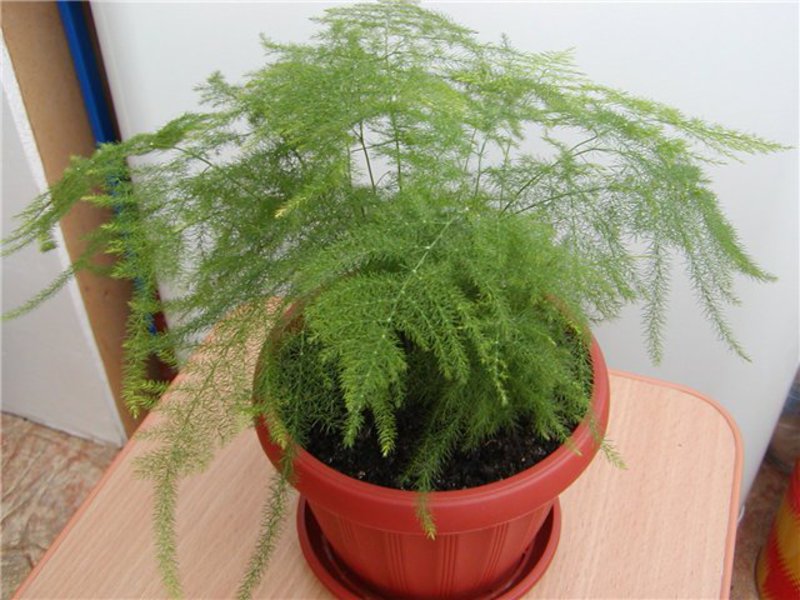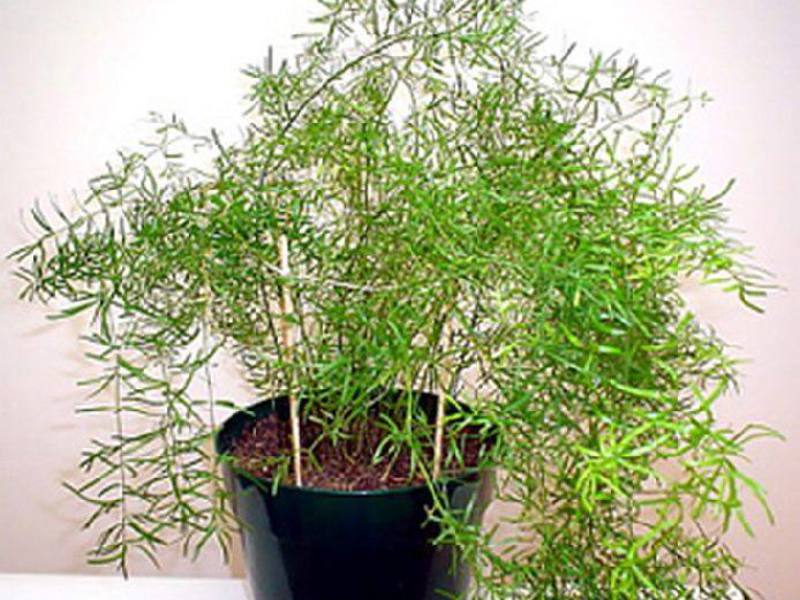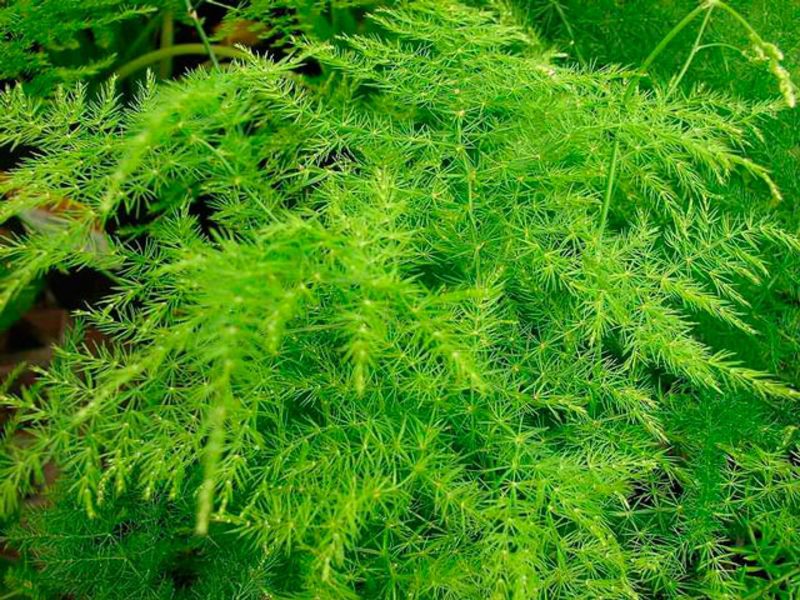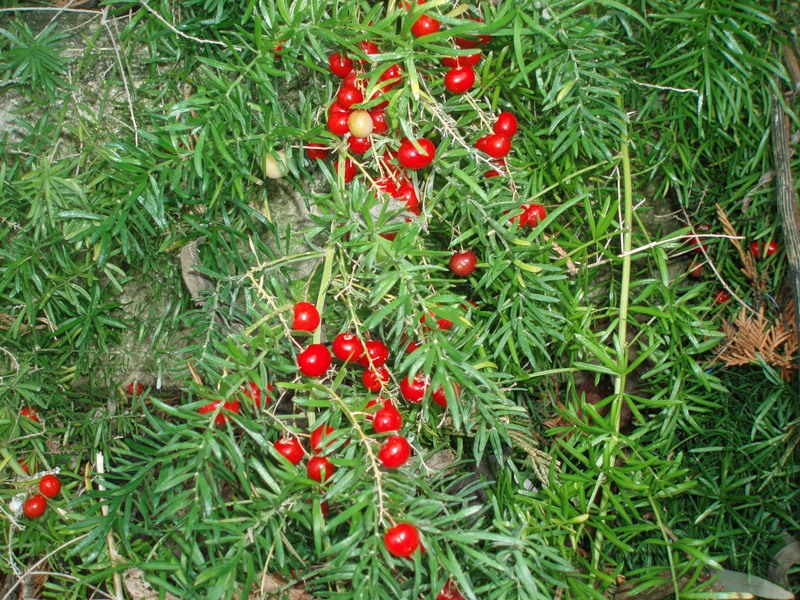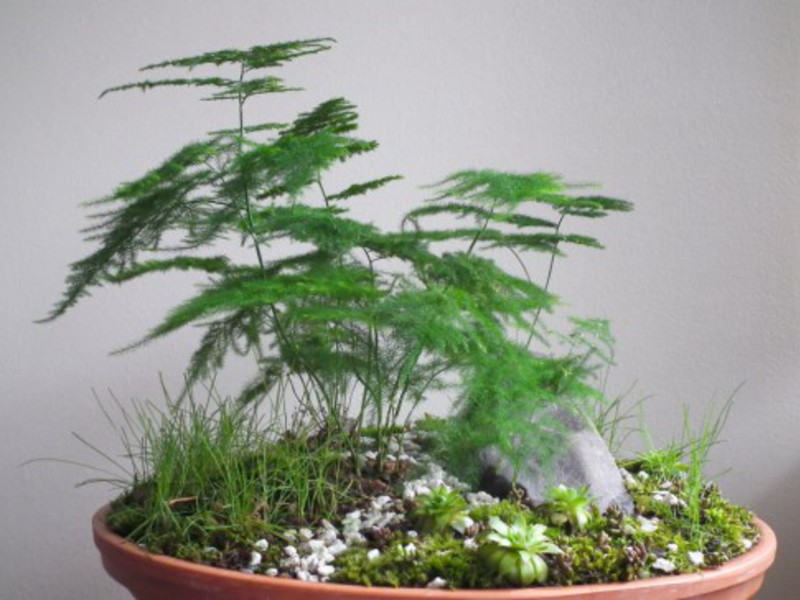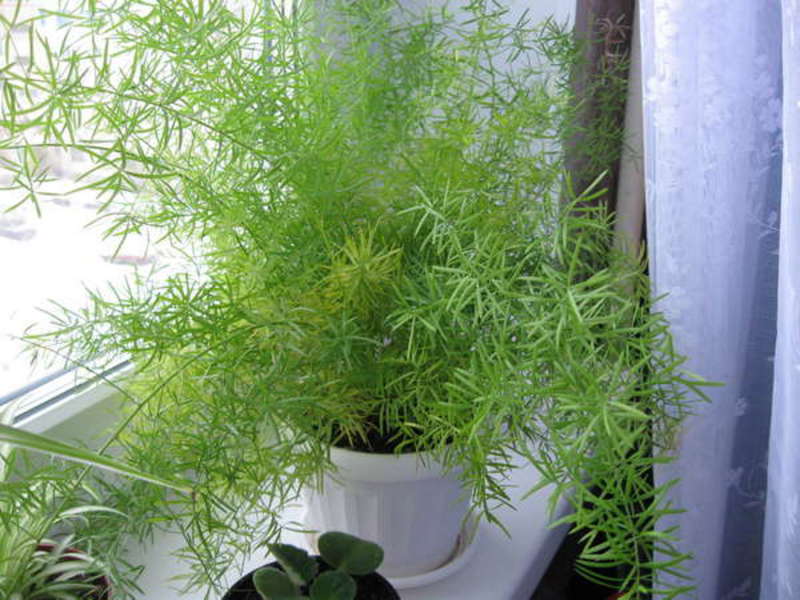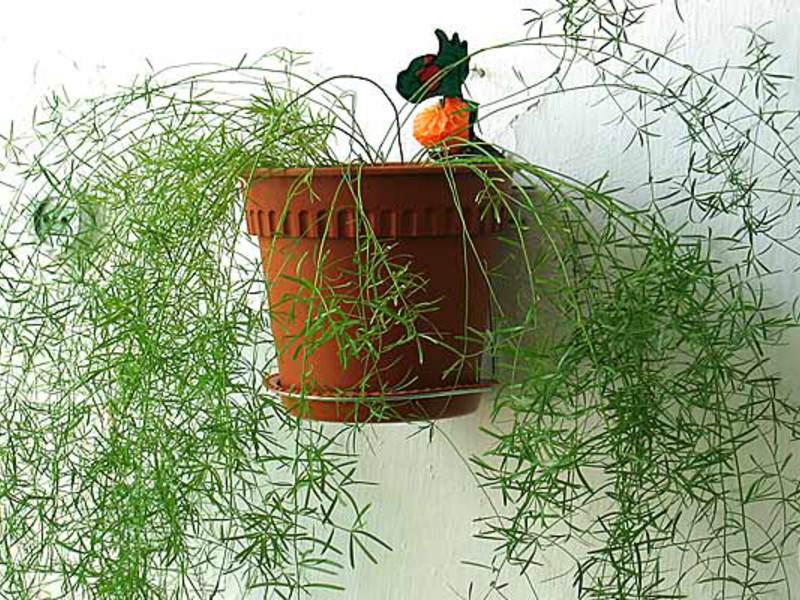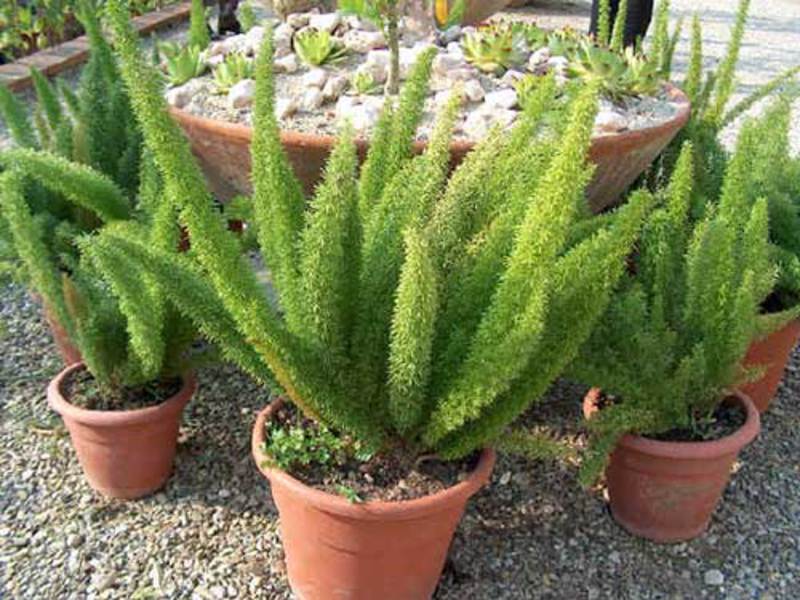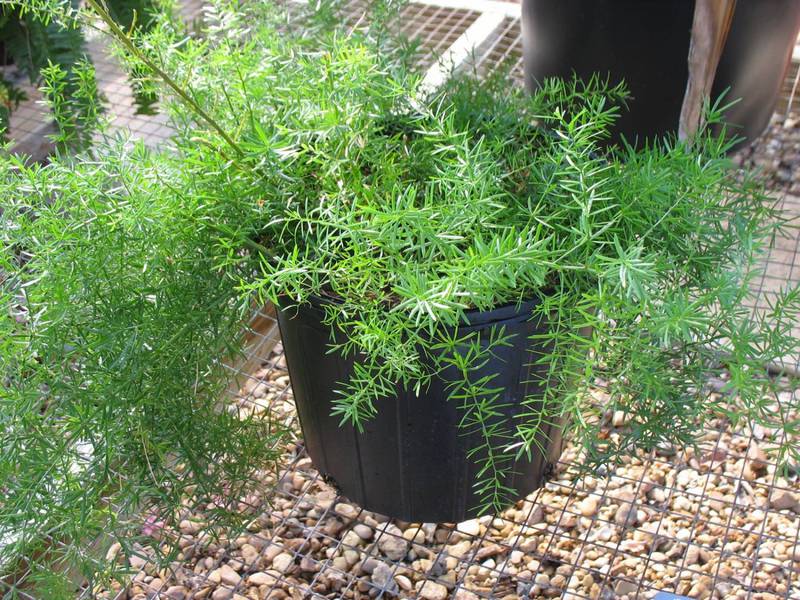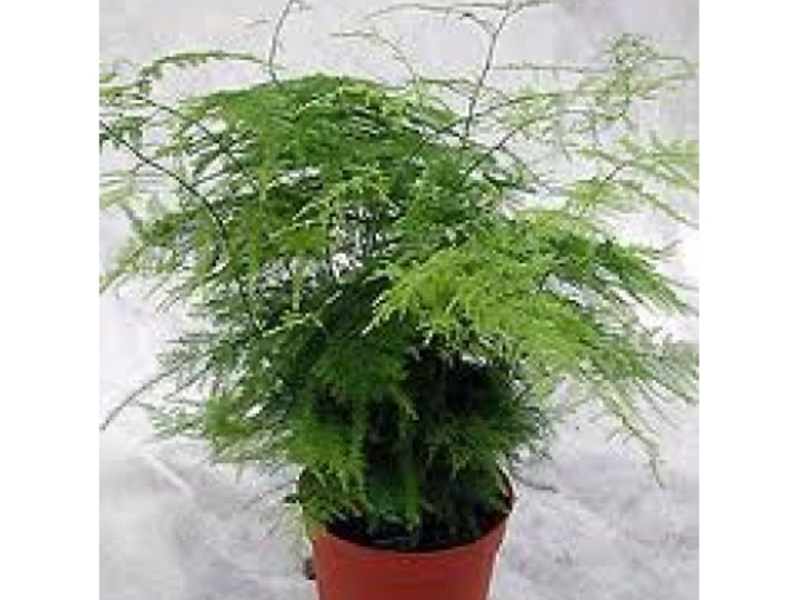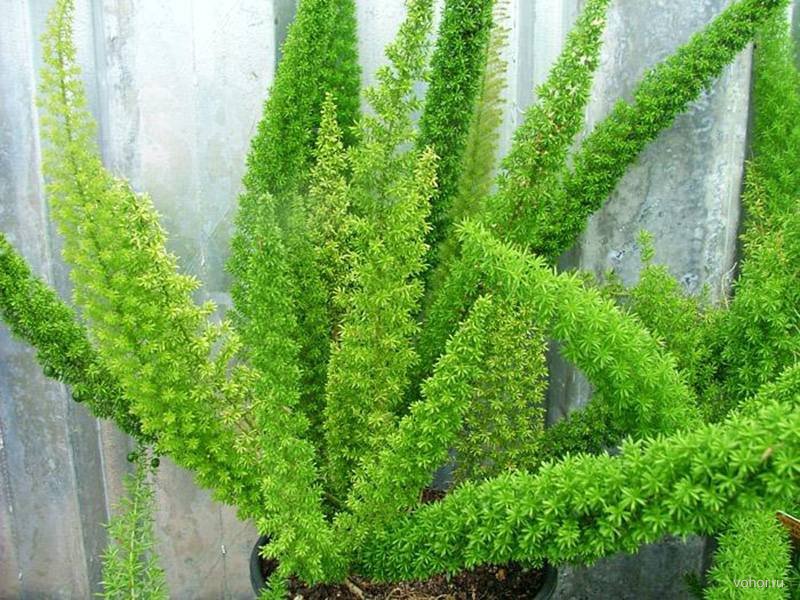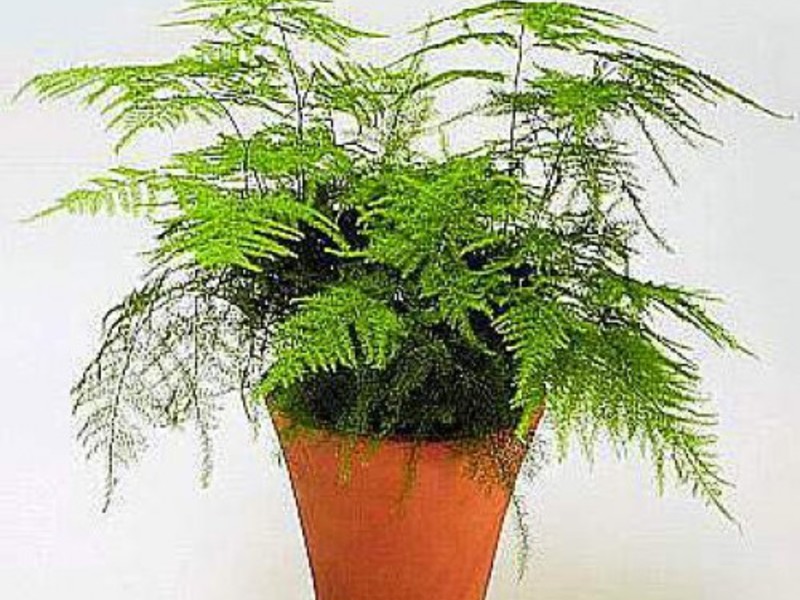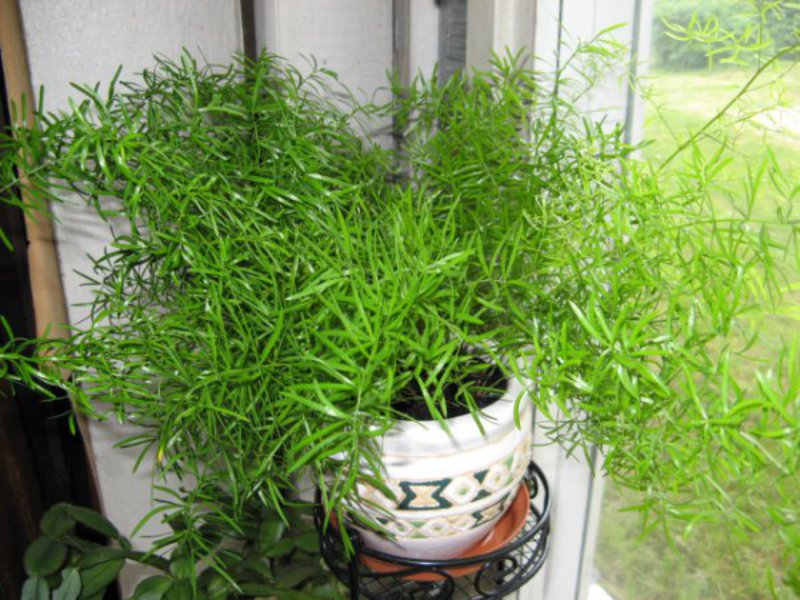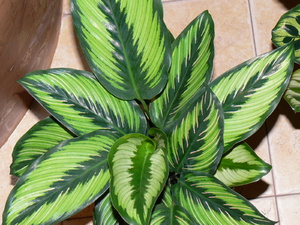Experienced growers are unlikely to be surprised to hear about asparagus. Many flower lovers are familiar with this plant. It is worth saying that this flower appeared on the European continent a long time ago - at the end of the century before last.
In recent years, it has spread quite widely in our country. Therefore, even today it is a worthy competitor to many newfangled exotic plants.
Content
What is asparagus?
A photo of a plant can be of interest to any sophisticated grower, however, you can understand the true reasons for its popularity by familiarizing yourself with its features.
As a classic perennial, this plant can grow in the form of a rhizome creeper, grass or shrub, forming small flowers, presented in the form of single or collected in inflorescences.
The usual habitats of asparagus are tropical regions of South and East Africa, as well as South America and Asia. Most asparagus varieties do not have the usual green leaves. They are replaced by flat needle-shaped branches, which are assigned the functions of leaves. At the end of flowering, berries with a red tint begin to form.
Asparagus is one of the brightest representatives of the asparagus family, but many often mistake it for a fern, which is not surprising given its appearance. The genus of this plant contains about 300 speciesthat differ in appearance. Moreover, among them there are very few asparagus species that can be grown indoors.
Asparagus was able to become popular due to its simplicity in care, so today it is represented on almost every continent.
In the genus of asparagus, there are also species that form edible fruits. First of all, these include asparagus. At the same time, there are species of interest as ornamental plants. Therefore, they are used to decorate the interior or serve as an element for creating flower arrangements. However, asparagus looks most impressive if it is grown at home in a hanging basket or flowerpot.
Views
This plant provides many different varietiesthat make their features unique.
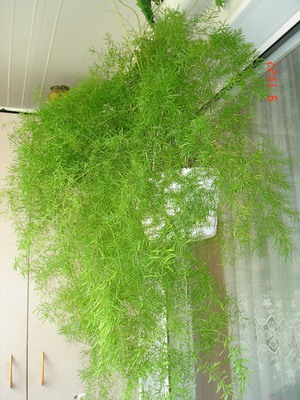 Asparagus asparagus, or asparagus (Asparagus asparagoides). This variety is a shrub with climbing stems that have a light green color, flexible thin shoots are formed during the growing season. The plant is quite tall, can grow up to 1.7 meters. Therefore, it can only be grown with support. The stems are leaf-shaped, oval in shape, with a glossy effect, the characteristic color is bright green. The flowers are small and white. After flowering, orange-red berries are formed;
Asparagus asparagus, or asparagus (Asparagus asparagoides). This variety is a shrub with climbing stems that have a light green color, flexible thin shoots are formed during the growing season. The plant is quite tall, can grow up to 1.7 meters. Therefore, it can only be grown with support. The stems are leaf-shaped, oval in shape, with a glossy effect, the characteristic color is bright green. The flowers are small and white. After flowering, orange-red berries are formed;- Asparagus pinnate (Asparagus plumosus). This variety grows in the form of a strongly branching shrub, forms naked shoots of the climbing type. The leaves are very small and reach a length of 0.5 cm. There are brown scales, formed in the form of a triangle.The modified stems are very similar to filamentous leaves, presented in the form of bundles of 3-12 pieces. They are very miniature: they reach 0.5-1.5 cm in length, and up to 0.5 mm in diameter. They have a slightly curved shape, light green color, due to which the plant acquires an openwork appearance. Flowers are small, presented in the form of single or 2-4 inflorescences, are white. After flowering, berries of a bluish-black color ripen, containing 1-3 seeds;
- The thinnest asparagus (Asparagus benuissimus). This variety shows a strong resemblance to the pinnate asparagus. The difference lies in phylloclades (altered shoots), which are thinner, more elongated, and have a more rare arrangement than the feathery species. Shoots of this asparagus variety grow up to 1.5 meters;
- Sprenger's Asparagus (Asparagus sprengeri). It grows in the form of a semi-shrub with climbing shoots. As a cultivated plant, it is grown as a herbaceous perennial. Adult specimens have bare, grooved or smooth stems that form many branches that reach a length of 1.5 meters. The leaves are subulate scales that grow up to 2-4 mm. The stems have a leaf-like flat shape, grow in length up to 3 cm, in width - 1-3 mm. May be straight or slightly curved with a pointed tip. They grow both single and collected in bunches of 2-4 cm. During the growing season, small flowers with a white or light pink tint are formed, thinning the fragrant aroma. After flowering, red berries ripen, containing one seed;
- Asparagus medioloides (Asparagus medioloides). A feature of this variety is not only tallness, but also the tendency to form a large number of branches on which evergreen phylloclades are formed. After cutting, the branches can remain fresh for many days even without water;
- Asparagus racemosus (Asparagus racemosus). This variety in culture is presented in the form of a semi-shrub, in which climbing shoots are formed, reaching a length of 2 meters. Cladodia have a linear subulate shape and are presented in the form of bunches. The flowers are bright pink in color, thinning the characteristic aroma, and are formed in the form of brushes.
Home care
So that asparagus pinnate begins to bloom in due time and is less likely to be affected by diseases, it needs provide suitable growing conditions.
Lighting
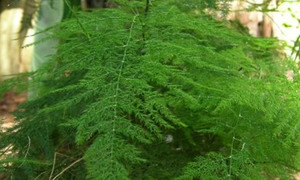 Asparagus pinnate feels most comfortable in places with good illumination, but it should be protected from direct sunlight. The most suitable places for growing asparagus are the windows located on the west and east side. With the onset of summer it is recommended grow a plant outdoors - balcony or garden. In this case, one should not forget about leaving: you can keep asparagus outside only in partial shade, where it can be protected from direct sunlight. If specimens were purchased for planting in the spring, then they should gradually get used to the new lighting conditions, and do not forget about leaving.
Asparagus pinnate feels most comfortable in places with good illumination, but it should be protected from direct sunlight. The most suitable places for growing asparagus are the windows located on the west and east side. With the onset of summer it is recommended grow a plant outdoors - balcony or garden. In this case, one should not forget about leaving: you can keep asparagus outside only in partial shade, where it can be protected from direct sunlight. If specimens were purchased for planting in the spring, then they should gradually get used to the new lighting conditions, and do not forget about leaving.
Temperature
The most favorable air temperature for growing asparagus at home is 20-25 degrees Celsius... Asparagus is not able to withstand high temperatures for too long, which subsequently leads to its death. In winter, caring for the plant requires maintaining the temperature at 12-15 degrees. At this time of the year, watering should be reduced, but care should be taken to keep the earthy ball constantly moist.
Asparagus grows at higher temperatures in winter, the stems may become exposed and dry. Exit from dormancy occurs already in February, as indicated by the emerging new young shoots. By this time, the green color returns to the plant. Therefore, already during this period, more moderate watering begins.
Air humidity and watering
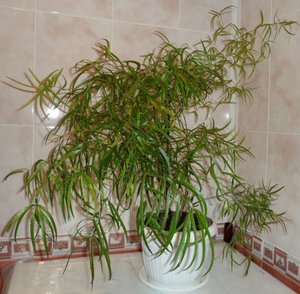 This plant responds positively to spraying.This procedure is most effective in the winter, when the air becomes dry due to operating radiators. therefore regular shower while leaving behind the plant is good for him.
This plant responds positively to spraying.This procedure is most effective in the winter, when the air becomes dry due to operating radiators. therefore regular shower while leaving behind the plant is good for him.
With the onset of summer, the plant needs to provide abundant watering, avoiding stagnant water. Watering intervals should be sufficient to allow the soil to dry out. When the temperature of asparagus cultivation decreases in winter, it is necessary to reduce watering, but you need to continue to keep the soil moist.
The soil
It is possible to ensure the best growth and development of asparagus if it is grown at home. in soil prepared from the following components:
- humus earth;
- leafy land;
- coarse sand.
All components are taken in a 1: 1: 0.5 ratio.
You can also use the following soil:
- sod land;
- humus earth;
- leafy land;
- sand.
The recommended ratio is 2: 2: 2: 1. The soil should turn out with a slightly acidic reaction (pH5.5-7.0).
Top dressing of asparagus
Home care requires providing the plant with nutrients. Fertilizers are applied to the soil once a week during the entire growing season. The exception is winter time, when feeding is reduced to once a month... For these purposes, use a weak solution of organic fertilizer or mineral fertilizers for indoor crops.
Transfer
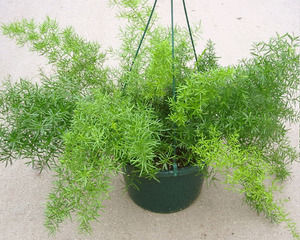 Due to the fact that this plant shows very fast growth, it should be transplanted every year in the spring. For this purpose, use a more spacious container, each time pruning the root system. Before moving the plant to a new container, you need to prune the exposed old branches. This measure stimulates the formation of young healthy shoots. For older plants, transplant held every 2-3 years.
Due to the fact that this plant shows very fast growth, it should be transplanted every year in the spring. For this purpose, use a more spacious container, each time pruning the root system. Before moving the plant to a new container, you need to prune the exposed old branches. This measure stimulates the formation of young healthy shoots. For older plants, transplant held every 2-3 years.
A feature of the decorative asparagus is that it has a large number of roots. In this regard, it must be grown in a container of suitable size. Otherwise, there will be a need for frequent transplants. Asparagus cannot grow too long in a cramped pot. As its roots grow in size, the container can easily burst.
Reproduction
To get new plants, you can use method of sowing seeds, dividing the rhizome, propagation by stem cuttings. In the first case, sowing is carried out in January-March. For this, a wet soil mixture is prepared, for which sand and peat are used. During sowing, it is necessary to create a temperature of at least 21 degrees, regularly spray and air. It takes about a month for the seeds to germinate. It is important not to miss the moment when the seedlings reach a length of 70 cm: in this state, a pick is carried out. Favorable conditions for transplanting are created at the beginning of summer: at this time, the plants are transferred into pots with a diameter of 10-12 cm.
Conclusion
 Asparagus is one of the unpretentious perennials, thanks to which today it can often be found in many homes... The uniqueness of the plant is given by its liana-shaped shoots. Therefore, it is widely used as an ornamental plant. However, asparagus can show all its best qualities only with appropriate care. This is especially true for lighting. It is important to remember that this is a tropical plant, therefore it is especially demanding on lighting and watering.
Asparagus is one of the unpretentious perennials, thanks to which today it can often be found in many homes... The uniqueness of the plant is given by its liana-shaped shoots. Therefore, it is widely used as an ornamental plant. However, asparagus can show all its best qualities only with appropriate care. This is especially true for lighting. It is important to remember that this is a tropical plant, therefore it is especially demanding on lighting and watering.
